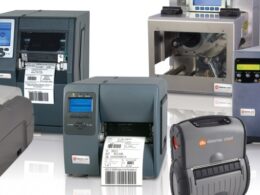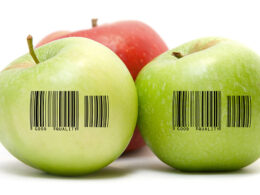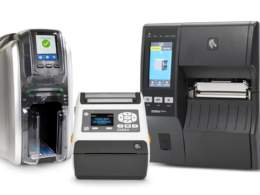Minimising Lean Wastes
The Lean manufacturing model is used in production industries all over the world. One of the cornerstones of Lean is minimising the 8 wastes. While it is good to look at them in terms of the big picture of manufacturing, you can also narrow it down to looking at how they apply to just printing and coding. Here are some suggestions for things to think about and improvements you can make in your workplace.

Defects
Defects result in either rework or scrapping the product. Either way, it’s a huge cost to the business and brings no real value to the customer. There are many possible reasons for defects on printed codes. Some inkjet printers rely on an accurate electric charge on each drop for correct placement on the product and in some cases, this may lead to poor quality prints. Thermal Transfer printers and label printers are reliant on printheads being in good condition. Operator error in entering the data to be printed is very common and often goes unnoticed for a long time.
Talk to PrintData about setting up an alarm cable to automatically stop your production line when any printer errors are detected. We can also set up an automatic print inspection system for you to ensure every single product has a clear, correct and readable code. And our QuickDesign software has many automation features which minimises the need for manual data entry from the operator.

Waiting
It is essential to remove any unnecessary delays from the manufacturing process. Waiting caused by printers could be because of a breakdown, excess maintenance, or long start-up/shutdown times. Having just one printer means it can also sometimes be the bottleneck in the production line.
Consider upgrading your printers to the 21st century with technology that makes them reliable and maintenance-free. While most other printers require a yearly service by a technician that could take over an hour, some modern printers instead have a simple module that is interchangeable by the operator in about 10 minutes. You may find yourself often needing a technician onsite, and so switching to a company that is locally based will save you waiting time. Many printers now have a simple start-up and shutdown sequence that takes only a few minutes and means you can press start/stop and walk away.
If your printer is not coding fast enough, consider reducing the size of your text to make the printer able to code faster. But as printers continue to develop, they continue to get faster, and now your coders never need to be the reason for slower production.

Motion
Printers can cause unnecessary movement by the operator. If they are not reliable the operator may be tempted to regularly walk over to check the print quality and check for error messages. If the consumables run out and must be replaced, this is extra work too. Or if your employees are manually applying labels to products or cartons, this is a lot of unnecessary motion.
Consider a printer with a touchscreen that is detachable and can be moved to a position the operator can see easily. A simple beacon is also suitable for some environments, with the ability to see important alerts from a long way away. Most modern inkjet printers should have an ink reservoir system, so the printer can continue running even when the consumables are empty. This allows the operator to refill the ink cartridges at their convenience.
Instead of an operator manually applying labels you can install a Print and Apply label system that does all the work for you, for a quicker, more reliable and more efficient solution. These systems are flexible and robust, so there will be a solution for you.

Over-processing
Over-processing refers to doing more work or having a more complex production system than is necessary. In a production environment this could include having a printer with more capabilities than is necessary, using a higher print quality than is needed, having complex messages, or having a user interface that requires a high number of interactions.
When buying a new printer, make sure the company has your best interests as their best interests. Think carefully about which features are important to you. Ask a technician to help you with simplifying print messages. The more automation is involved, the less over-processing is involved. Think about what is required in your print message and get rid of anything that is surplus to what is required.
A usable and clear user interface doesn’t only make life easier for the operator but also limits the amount of time interacting with the printer, which in turn limits over-processing in your factory.
If you are interested in more ways to minimise the Lean waste in your workplace, get in touch with us to book a free site consultation! Call (08) 9361 6777 or scroll down to the bottom of this page to submit a request for a site visit.







